Apr 2013
Big bore piston, second thoughts, an update
25/04/13 17:30
I had a little time to play some more, so here is the latest and more definitive piston, with oil control ring seep holes, cross drillings, and wire clip fitting details added. Piston skirt and crown thickness is still quite thick in places, but could be pulled down some more I think.
CAD model has been totally redrawn and updated from yesterday’s attempt, and this is now a very close approximation of the direction I will be taking, with a calculated bare weight of 520 Gr. This is a reduction of 60 grams on the first CAD version, and well within target to beat the all up weight of the original 85mm Panhard piston, which was 636 Gr in standard trim (Tigre engines sometimes had lighter pistons).
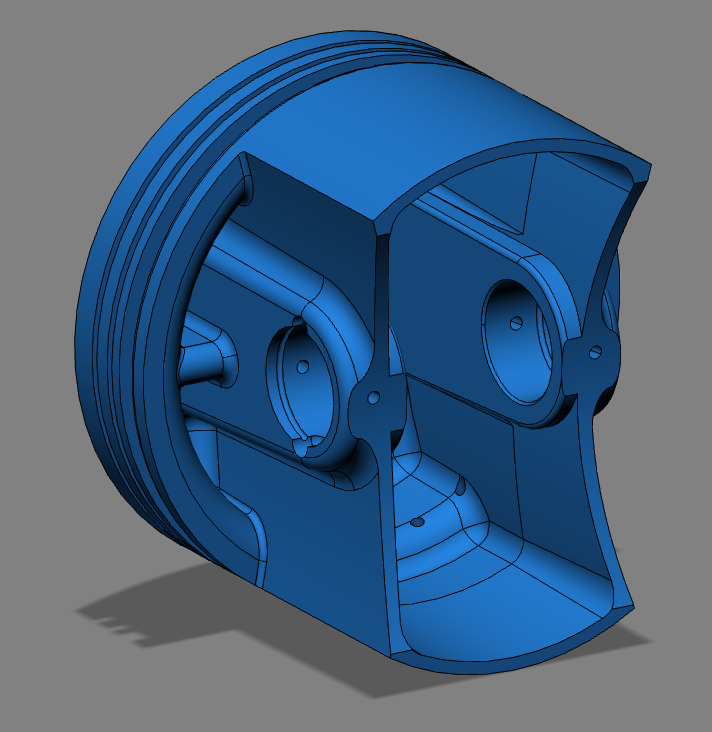
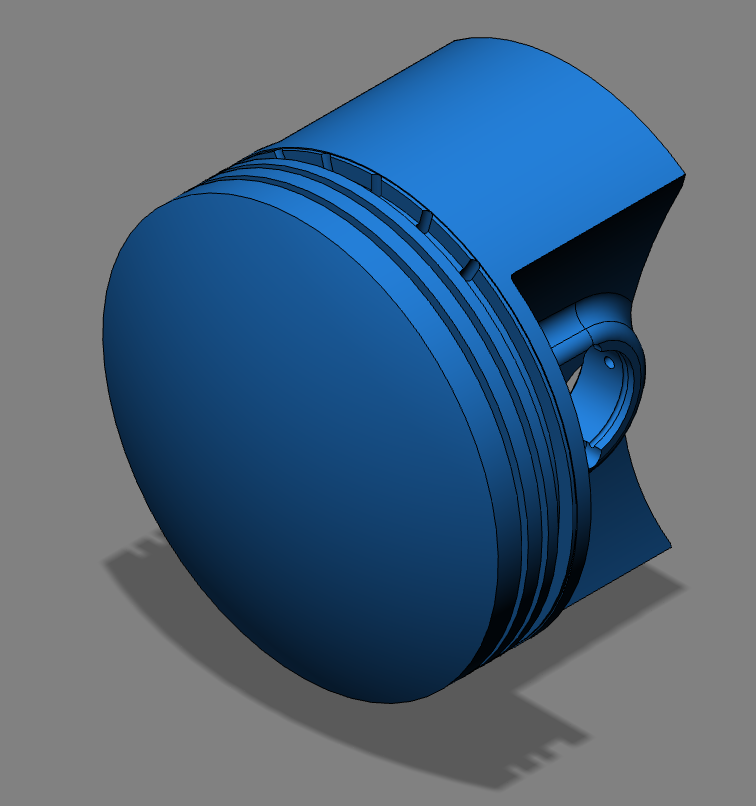
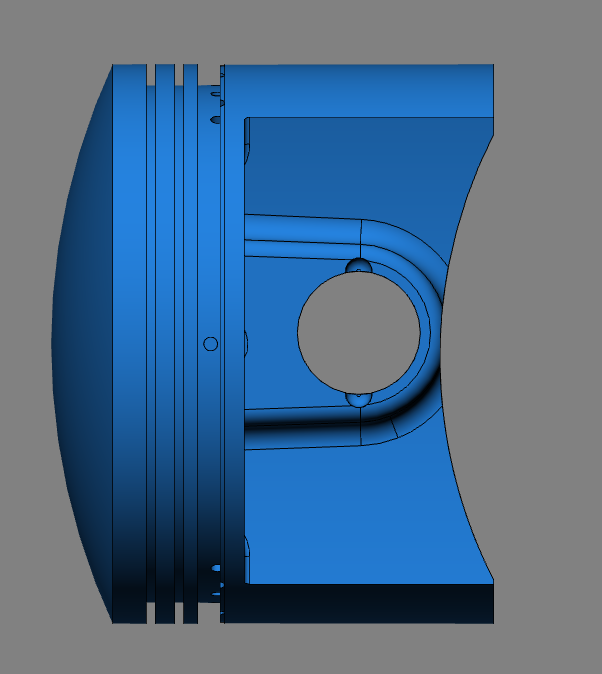
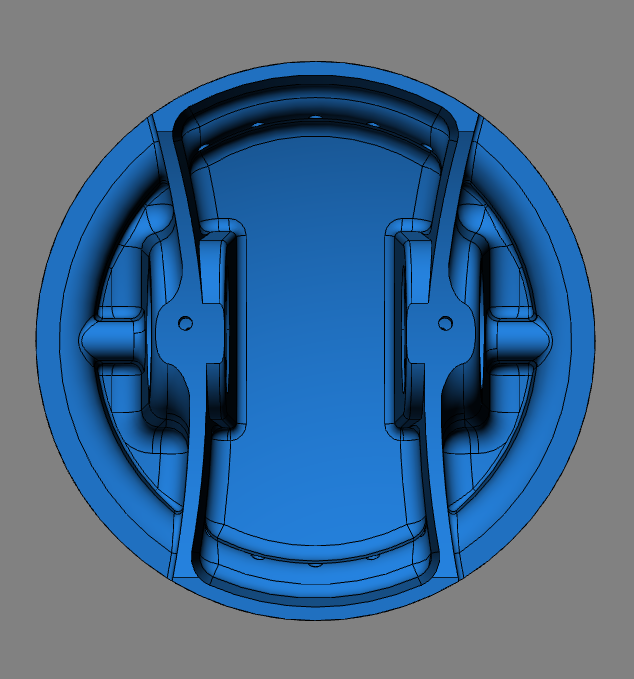
CAD model has been totally redrawn and updated from yesterday’s attempt, and this is now a very close approximation of the direction I will be taking, with a calculated bare weight of 520 Gr. This is a reduction of 60 grams on the first CAD version, and well within target to beat the all up weight of the original 85mm Panhard piston, which was 636 Gr in standard trim (Tigre engines sometimes had lighter pistons).




Big bore piston, first thoughts in CAD
24/04/13 19:07
I am tinkering with making a CAD model of the new 100mm piston, and at the same time making a forging compliant interior for the plug that will have to be specially commissioned. The CNC tooling is struggling to reach the inside of the solid billet piston, because Panhard pistons are so deep. After looking at the cost and weight constraints imposed by this approach, it is almost as economic to create a forging tool and a minimum run of pistons.
Realistically these pistons will be double the price of the initial batch I had made for Brian’s engine, but the important difference is, unlike other big bore solutions, no cylinder head separation or liner sinking operations will be required, so no pushrod, pushrod tubes or cowling mods will have to be made either. So although the new piston costs more, the amount of other work is considerably less, so it will bring other savings. The liners will be brand new and bespoke, so all that is required is a remachined original cylinder and crankcase, which you have to do anyway.
Please note, unlike Brians piston, the new piston will also feature an offset pin to reduce the crank pin loads, and the skirt designed to accommodate this too. Offset pin forgings are not available at this depth, so that’s another reason for creating a new forging tool.
Back to the piston sketches, first thoughts, a few errors in the drawing, but enough for a ball park doodle. This still represents unfinished business yet, but the 580 Gr calculated piston weight is still less than the 94mm BMW R100 piston already, and there is more to come off, when I re-profile some elements later. Over the next few weeks, I am going to produce a few variants in CAD, then see which has the most production viability.
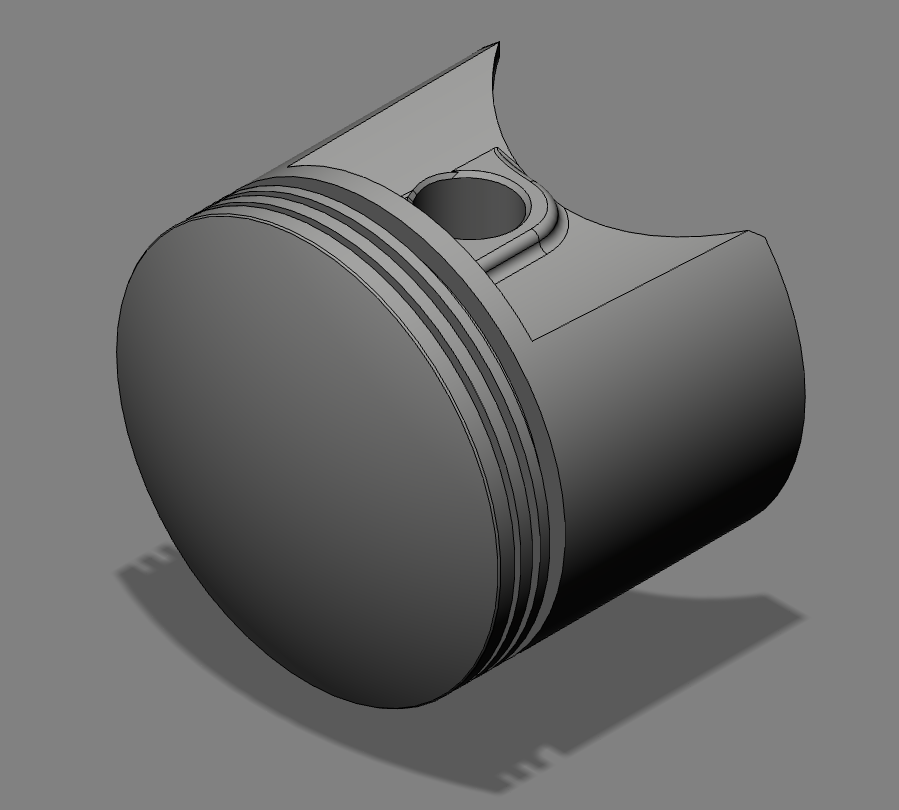
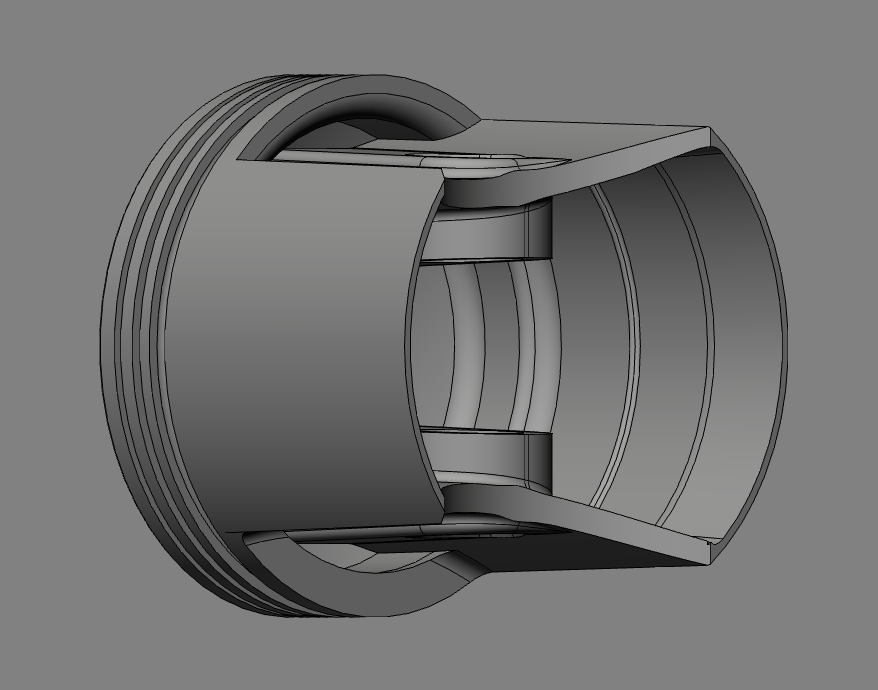
If you are interested in these pistons, I suggest you contact me, otherwise you will miss out.
Realistically these pistons will be double the price of the initial batch I had made for Brian’s engine, but the important difference is, unlike other big bore solutions, no cylinder head separation or liner sinking operations will be required, so no pushrod, pushrod tubes or cowling mods will have to be made either. So although the new piston costs more, the amount of other work is considerably less, so it will bring other savings. The liners will be brand new and bespoke, so all that is required is a remachined original cylinder and crankcase, which you have to do anyway.
Please note, unlike Brians piston, the new piston will also feature an offset pin to reduce the crank pin loads, and the skirt designed to accommodate this too. Offset pin forgings are not available at this depth, so that’s another reason for creating a new forging tool.
Back to the piston sketches, first thoughts, a few errors in the drawing, but enough for a ball park doodle. This still represents unfinished business yet, but the 580 Gr calculated piston weight is still less than the 94mm BMW R100 piston already, and there is more to come off, when I re-profile some elements later. Over the next few weeks, I am going to produce a few variants in CAD, then see which has the most production viability.


If you are interested in these pistons, I suggest you contact me, otherwise you will miss out.
Big bore liner, first 3D CAD model
15/04/13 22:36
I have drawn this up for a friend in France, but have got to translate it to 2D for the liner company, looks vaguely familiar doesn’t it. :)
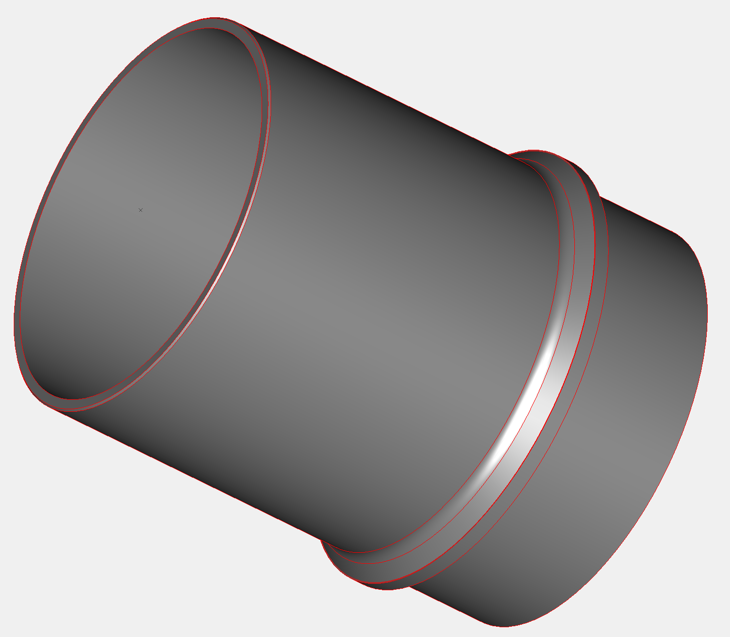
but this is better skunkworks. I have a 44mm DCNF carburettor lying around, so I thought it might make a useful addition to the standard 38mm Zenith NDIX, but it won’t fit on a standard inlet manifold. Time for a CAD session, and rustle up another 3D model.
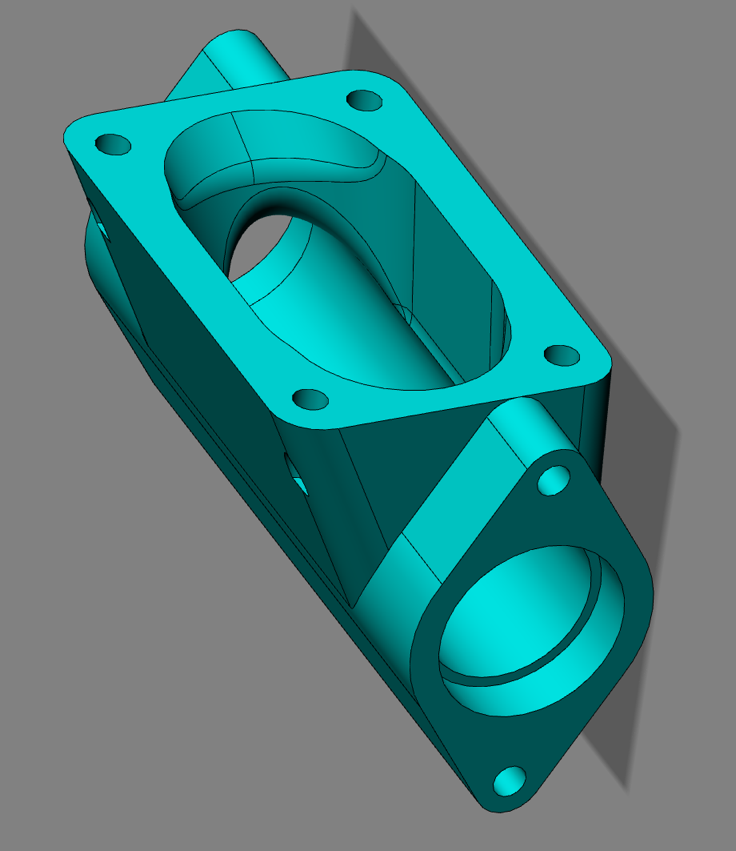
As you can see the big bore project is gaining momentum.

but this is better skunkworks. I have a 44mm DCNF carburettor lying around, so I thought it might make a useful addition to the standard 38mm Zenith NDIX, but it won’t fit on a standard inlet manifold. Time for a CAD session, and rustle up another 3D model.

As you can see the big bore project is gaining momentum.
The timing cover is finalised for the first test batch
14/04/13 14:09
Since the last update the 2012 engine developments have been updated yet again, and this time to use another sensor altogether. This crankshaft sensor gives fantastic trigger performance at low speeds from 7 t/min upwards. It is extremely tolerant of air gap, so it’s a no brainer to not include it in the ignition developments for the big bore engine.
Latest version for twin spark set up using the Imfsoft IgnitionTCI 6.1 pictured below.

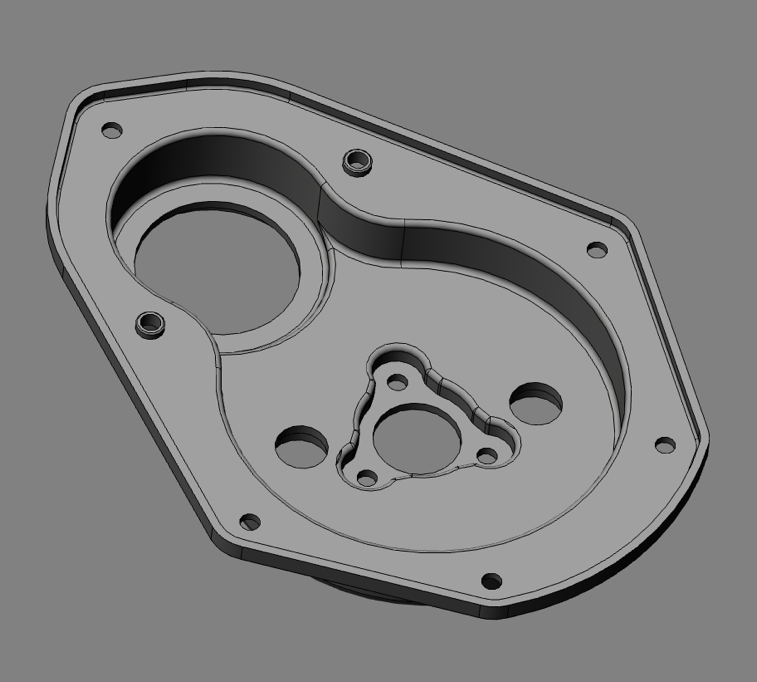
This is the proposed external sensor appearance, without the front pulley seal being fitted.
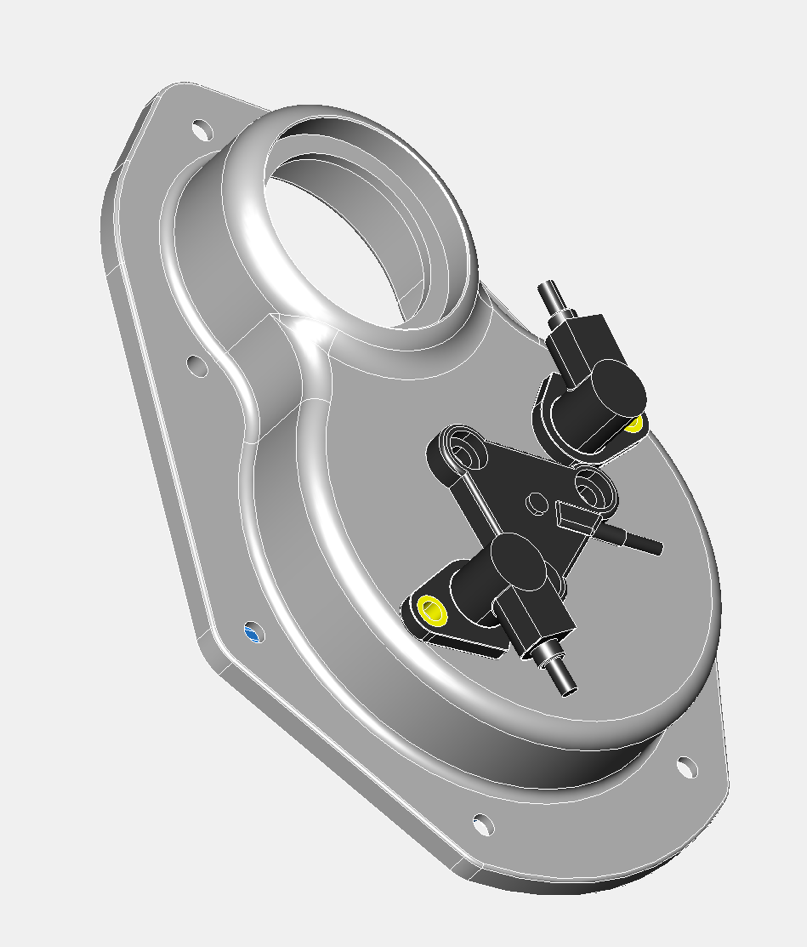
The ferrous trigger is simple enough too, as it’ll be a self coloured M6 stud (at the moment) , turned from hex bar, and threaded into the aluminium timing gear with a dab of Loctite.
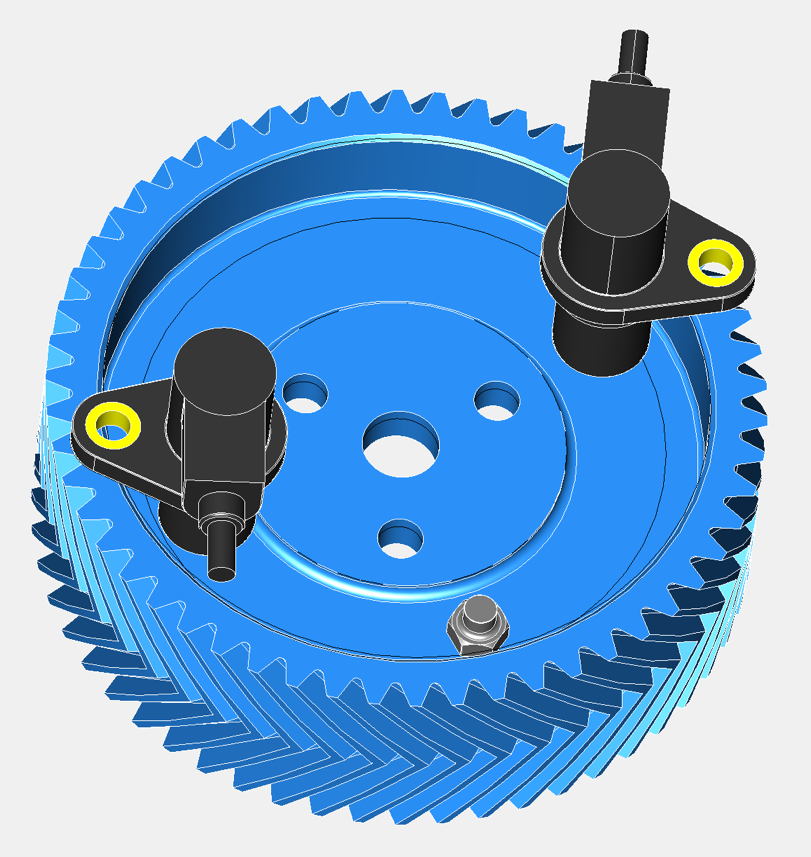
Bench testing has been carried out using a wasted spark system, but I am still awaiting the Bosch Kompakt connectors for the twin single fire coils.
Latest version for twin spark set up using the Imfsoft IgnitionTCI 6.1 pictured below.


This is the proposed external sensor appearance, without the front pulley seal being fitted.

The ferrous trigger is simple enough too, as it’ll be a self coloured M6 stud (at the moment) , turned from hex bar, and threaded into the aluminium timing gear with a dab of Loctite.

Bench testing has been carried out using a wasted spark system, but I am still awaiting the Bosch Kompakt connectors for the twin single fire coils.
Front cover for Peugeot sensors
01/04/13 10:37
I must have drawn this a few times already, but I hope I am getting close now, but the real candidate will surface when I do the trigger wheel tests.
The Peugeot sensors are shorter, so allow for better EFI triggers to be used (more depth), but they are taller out of the cover than the BMW sensors. They also have to be recessed into the timing cover, so that they will clear the fan, although there is a plan for this later on the big bore engine.
Here is the wasted spark single tooth variant, or a twin spark and EFI capable version, assuming you are using a toothed wheel and suitable ignition controller, which only needs a single sensor.
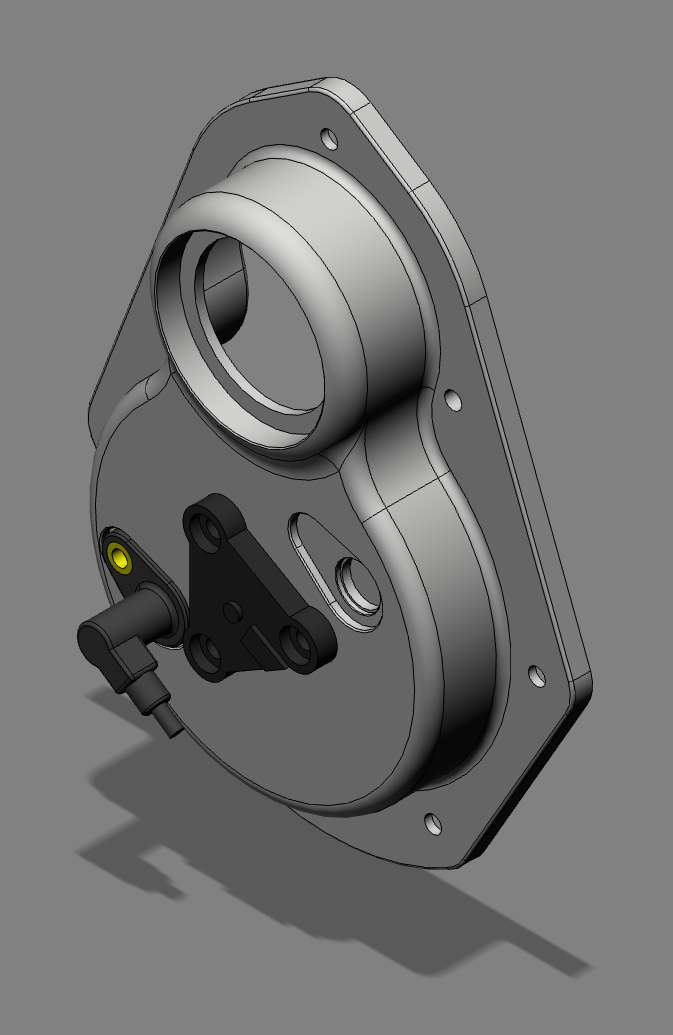
The second sensor slot isn’t drilled all the way through, but all the critical machining is done to enable twin spark with the planned ignition controller.
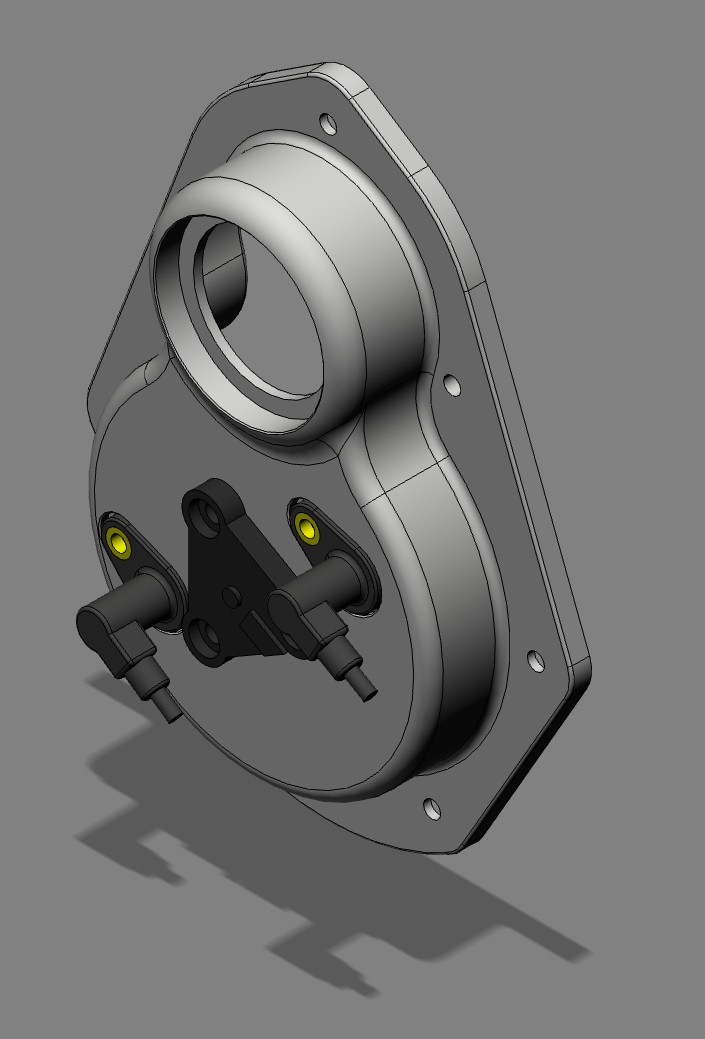
This means you can start with wasted spark, and upgrade to twin spark later, or change to a different ignition controller, use a toothed wheel, and do twin spark & EFI, just like a modern car. For example, this type of toothed wheel will run MS Extra, B&G code on the MegaSquirts & MicroSquirts, plus all the usual suspects DTA, Omex, Emerald and Lumenition, in a sequential or wasted spark mode.
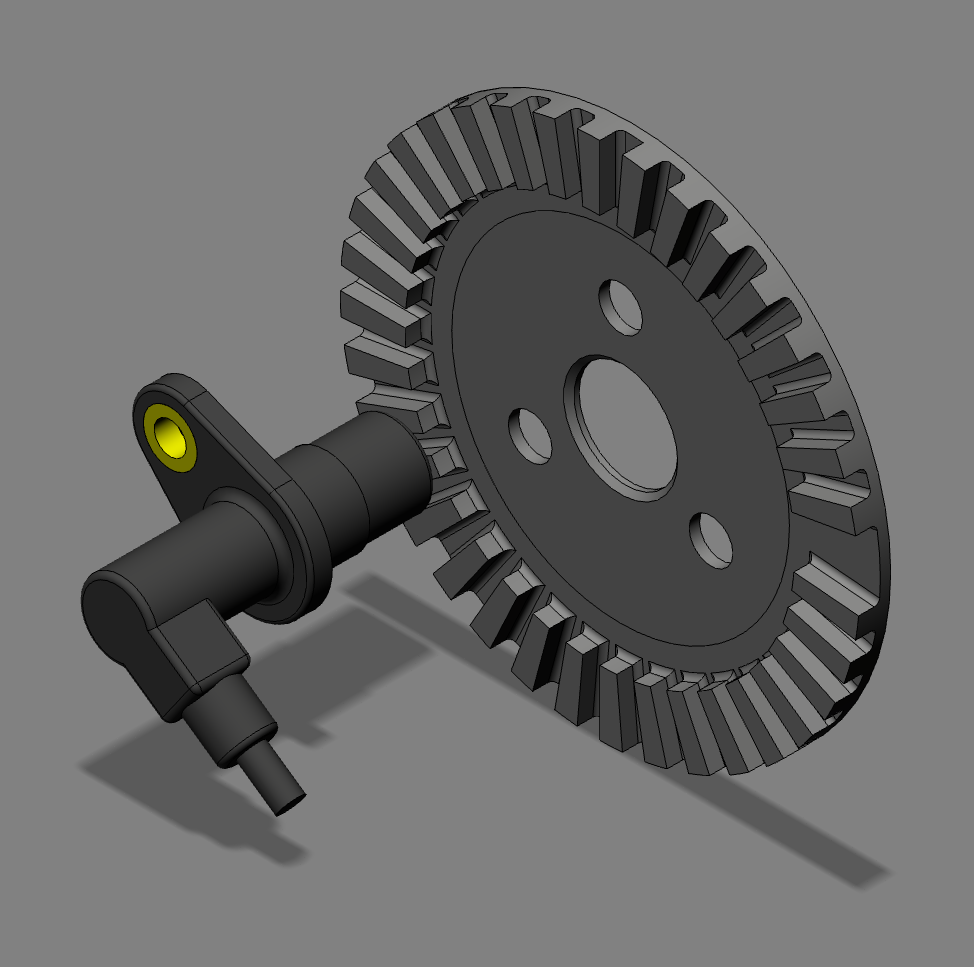
The Peugeot sensors are shorter, so allow for better EFI triggers to be used (more depth), but they are taller out of the cover than the BMW sensors. They also have to be recessed into the timing cover, so that they will clear the fan, although there is a plan for this later on the big bore engine.
Here is the wasted spark single tooth variant, or a twin spark and EFI capable version, assuming you are using a toothed wheel and suitable ignition controller, which only needs a single sensor.

The second sensor slot isn’t drilled all the way through, but all the critical machining is done to enable twin spark with the planned ignition controller.

This means you can start with wasted spark, and upgrade to twin spark later, or change to a different ignition controller, use a toothed wheel, and do twin spark & EFI, just like a modern car. For example, this type of toothed wheel will run MS Extra, B&G code on the MegaSquirts & MicroSquirts, plus all the usual suspects DTA, Omex, Emerald and Lumenition, in a sequential or wasted spark mode.

There will be another revision to the front cover
01/04/13 08:47
I decided to model the Peugeot crank sensor this morning, and after doing so and dropping it in the 3D model, it looks like my sensor centres can be moved outwards a little. The Peugeot sensors are slightly narrower than the BMW E46 Hall effect ones, and as this timing trigger is designed to go in the Celeron camshaft gear (worst case) the smaller internal width pushed it over.
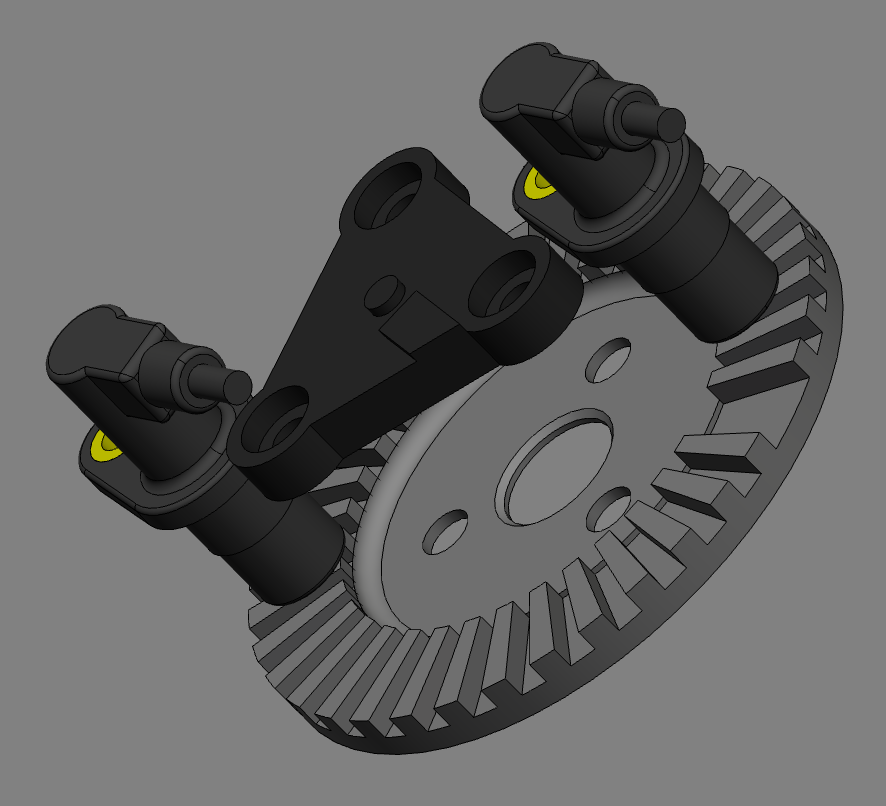
Although they aren’t designed to have an O ring seal, I can modify the cover to allow for this and at the same create a drip free joint. The OEM fitment uses the ribs in the sides to push fit into the crankcase hole, and the screw just stops it jumping out.
A few tweaks to the 3D model and it will be finished…again!, but as I am testing the trigger wheel designs in the next few days, it might change again, if I don’t get good signal traces. :)

Although they aren’t designed to have an O ring seal, I can modify the cover to allow for this and at the same create a drip free joint. The OEM fitment uses the ribs in the sides to push fit into the crankcase hole, and the screw just stops it jumping out.
A few tweaks to the 3D model and it will be finished…again!, but as I am testing the trigger wheel designs in the next few days, it might change again, if I don’t get good signal traces. :)
